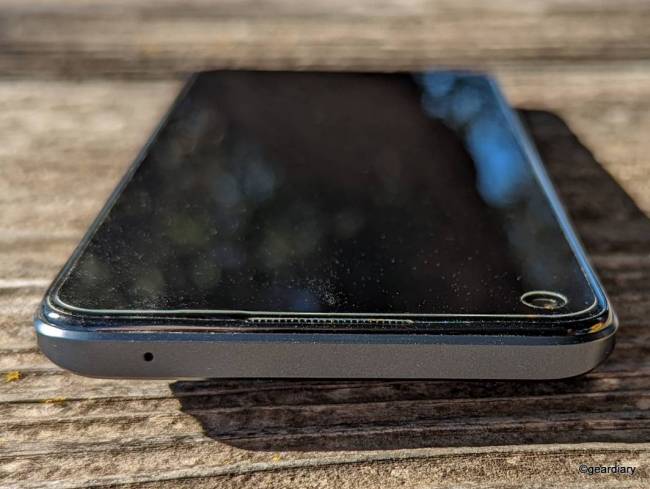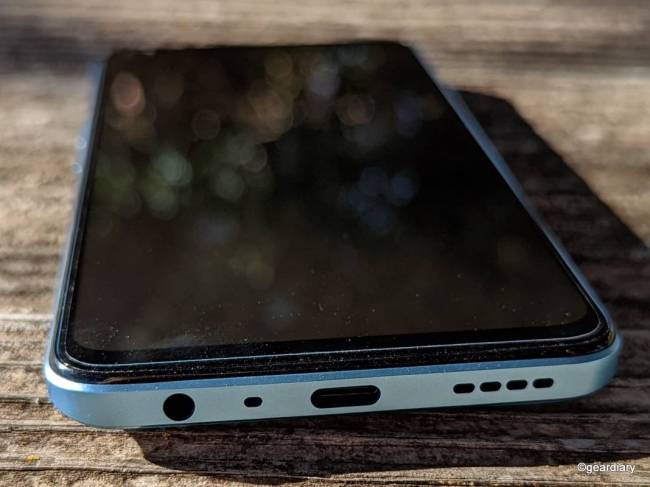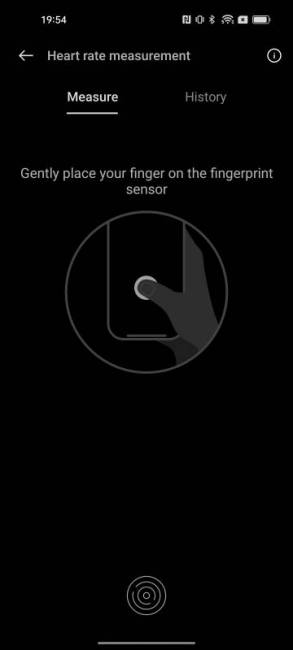Realme became its own brand, independent of OPPO in 2018; since then, the Chinese company has become a force in its own right. Currently listed as a top-5 smartphone vendor in 30 global markets and six regions, part of realme’s success has come from its firm commitment to make well-designed, aesthetically pleasing smartphones that have competitive features rarely found in similarly-priced devices. The latest models in their lineup are the just-announced realme 9 Pro+ and realme 9 Pro; realme has sent them in for us to check out, so here’s a hands-on look at both devices.

Before we jump into what differentiates the two smartphones, let’s talk about what they have in common.
You may recall that when I reviewed the realme GT Explorer Master Edition (China-version), I had to complete a few extra but simple steps to get all of my favorite Google apps loaded onto the device. Since the realme 9 Pro series is set for a global launch, it’s worth pointing out that these Android 12 smartphones will come loaded with Google apps and services right out of the box.
Both dual-SIM 5G phones are available in multiple memory variants; the ones I received came with 128GB storage and 8GB RAM. These phones also have RAM expansion, which allows you to boost that 8GB RAM by 2GB, 3GB, or 5GB when enough memory is available (after a restart).
The realme 9 Pro and realme 9 Pro+ can be unlocked with a fingerprint, facial recognition, or a password. They both have large batteries, triple rear camera arrays, 3.5mm audio jacks, and they run Android 12 with the realme UI version 3.0 overlay. Realme has committed to two years of Android OS updates.
Both devices have slim bezels around the top and sides of the display, with a ~2mm bezel on the bottom.

The realme 9 Pro+ is on the left, and the realme 9 Pro is on the right; both phones are turned up to max brightness.
The realme 9 Pro and realme 9 Pro+ are available in Aurora Green and Midnight Black, which are quite shimmery and lovely, but if you want to try something special, you’ll want to get either device in Sunrise Blue. Sunset Blue is realme’s first photochromism device, a light shift design that shifts from blue to red under any UV light. The effect is very cool, as you will soon see.
Both phones are compatible with the following global bands:
GSM: 850/900/1800/1900MHz
WCDMA: 1/2/4/5/6/8/19
LTE FDD: 1/2/3/4/5/7/8/12/13/17/18/19/20/26/28/66
LTE TDD: 38/39/40/41
5G NR: n1, n3, n5, n7, n8, n20, n28, n38, n40, n41, n66, n77, n78
The realme 9 Pro+ and the realme 9 Pro may share the same series’ DNA, but there are significant differences between the two smartphones. And while each device has features that you’d expect to see in pricier smartphones, I think you’ll be pleasantly surprised when their retail pricing is revealed.
The realme 9 Pro
The realme 9 Pro features the Qualcomm Snapdragon 695 5G mobile platform, which supports mmWave and sub-6GHz 5G versions and is touted for offering 15% CPU performance and 30% faster graphics rendering than the Snapdragon 690. It is also one of the most versatile and powerful 5G processors available in a phone in this price segment. The phone is kept cool when pressed with a liquid cooling system.
Included in the box are the realme 9 Pro, a 33W Dart Charge EU charging adapter, a USB Type-C cable, a silicone case, a manual, a warranty card, and the SIM card tool. Also included is a factory-installed film screen protector.
The realme 9 Pro measures 6.5″ tall by 3″ wide by o.35″ thick, and it weighs 7 ounces. The 6.6″ AMOLED display is perfectly flat, and the aluminum sides also have flat edges which taper nicely into the glass on the top and bottom of the phone. The glass on the back of the 9 Pro curves so that the phone fits well in hand with no sharp edges. The build quality is excellent, and nothing would suggest that this wasn’t a more expensive device.
You can set the display to refresh at 60Hz for battery savings, 120Hz for the smoothest animations, or Auto Select, which allows the device to select the best refresh rate based on the app you are currently using. In this mode, the refresh rate will range from 30Hz for static images, 48Hz to 50Hz for movies and shows, 60 to 90Hz for games, and 120Hz for scrolling through feeds. All of this is to give you the best viewing experience while also maximizing the 5,000mAh battery.
In the upper left corner of the display, there is a 16-megapixel wide-angle punch hole selfie camera.

On the top, there is a noise-canceling microphone.

On the left side, there are volume buttons and the SIM tray. Worth noting is that the realme 9 Pro has a SIM tray that can either accept two 5G nanoSIM cards or a single 5G nanoSIM and a microSD memory card. I miss the days when all phones would let us expand our memory! Why are the less expensive phones the only ones left that afford us that courtesy anymore?

There is a 3.5mm headphone jack, a microphone, a Type-C port, and a mono speaker on the bottom.

And on the right side, there is a nicely recessed (and easy to feel) power button with an integrated fingerprint reader.

There is a camera module on the back of the realme 9 Pro with a 64-megapixel wide-angle main lens, an 8-megapixel 119º ultrawide lens, and a 4cm macro lens.
Even though the Midnight Black doesn’t have the photochromic layer that the Sunset Blue offers, it still pops with a lovely lighting effect that reminds me a bit of a black star sapphire.

The realme 9 Pro will be available globally with 8GB/128GB for $399.
The realme 9 Pro+
The realme 9 Pro+ features the MediaTek Dimensity 920 5G processor mobile platform, which supports intelligently adaptive displays, better cameras, advanced connectivity with dual 5G SIMs and WiFi 6, and boosted gaming performance that’s 9% faster than the Dimensity 900. The Dimensity 920 is also one of the top-performing 5G processors available in this price segment.
To keep things running cool when running even the most demanding apps and games, the 9 Pro+ uses an industry-leading vapor chamber cooling system. This cooling system also keeps the 4,500mAh battery cool, extending battery life. The included 60W SuperDart charger will take you from 0 to 50% charge in just 15 minutes when needed.
Included in the box are the realme 9 Pro+, a 60W SuperDart EU charging adapter, a USB Type-C cable, a silicone case, a manual, a warranty card, and the SIM card tool. Also included is a factory-installed film screen protector.
The realme 9 Pro+ measures 6.3″ tall by 2.9″ wide by o.31″ thick and weighs 6.4 ounces. The 6.4″ Super AMOLED display is perfectly flat. Like on the realme 9 Pro, the 9 Pro+’s aluminum sides have flat edges which taper nicely into the glass on the top and bottom of the phone. The glass on the back of the 9 Pro+ is also curved so that the phone fits nicely in hand with no sharp edges. Once again, the build quality is excellent, and there is nothing that would suggest that this wasn’t a more expensive device.
You can set the 9 Pro+’s display to 60Hz for battery savings, 90Hz for the smoothest animations, or you can choose Auto Select, which allows the device to select the best refresh rate based on the app you are currently using. Gamers will appreciate that the 9 Pro+ has a touch sampling rate of 360Hz.
In the upper left corner of the display, there is a 16-megapixel wide-angle punch hole selfie camera. The 0.75″ ear speaker works in tandem with the speaker on the bottom right of the 9 Pro+, and they feature Dolby audio sound.

On the top, there is a noise-canceling microphone.

There are volume buttons and a dual 5G nanoSIM tray on the left side. Unfortunately, the realme 9 Pro+ doesn’t accept a microSD memory card.

There is a 3.5mm headphone jack, a microphone, a Type-C port, and a second speaker on the bottom.

And on the right side, there is a power button.

The realme 9 Pro+’s fingerprint reader is in-display, and it is quite accurate; it also has a unique feature.
That’s right; the in-display fingerprint reader can also function as a wellness device by measuring your heart rate. You can find this feature under realme Lab in Settings.
On the back of the realme 9 Pro+, a camera module features the Sony IMX766 with optical image stabilization (a first for a mid-range smartphone), an 8-megapixel 119º ultrawide lens, and a 4cm macro lens.
The importance of the Sony IMX766 sensor is that when paired with realme’s ProLight Imaging Technology the result is excellent light intake. Using Optical Image Stabilization reduces the blur, and then realme’s AI Noise Reduction Engine 3.0 uses advanced software algorithms to intelligently reduce noise in the photos by 30% while enhancing details in the image, which results in a beautiful, natural-looking photo.
The Sony IMX766 is the same sensor that impressed me on the OPPO Find X3 Pro and the OnePlus 9 Pro, both of which were much more expensive flagship smartphones!

Notice the color of the aluminum side rails; that’s the color of the phone’s back when it isn’t exposed to UV light!
Realme even included an actual Sony IMX766 camera module with the 9 Pro+, which I thought was cool because it’s not that often that you get to see smartphone components in their raw state.
I received the realme 9 Pro+ in the Sunset Blue, and the photochromic “light shift” design creates a really unusual visual effect. The phone is literally a light glittery blue when inside…

… but if you get it anywhere near a UV light source, in less than five seconds, it turns a gorgeous red with those light blue accents. This phone is a tricky chameleon!

The realme 9 Pro+ will be available globally with 8GB/128GB and 8GB/256GB, starting at $399.
While some phone manufacturers seem to be in a never-ending race to make everything bigger, faster, and much more expensive, realme is making reasonably sized, impressively spec’d, and affordably priced smartphones that nearly everyone can afford.
Source: Manufacturer supplied review samples
Via realme

















